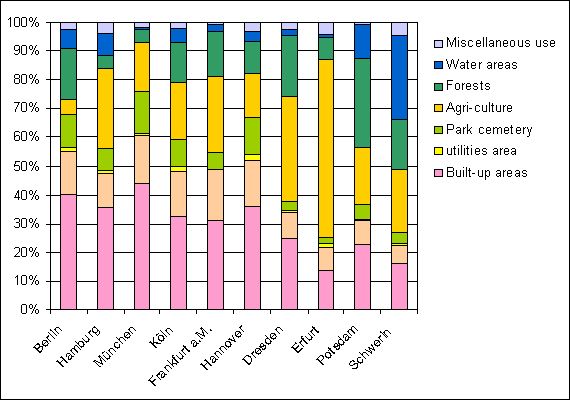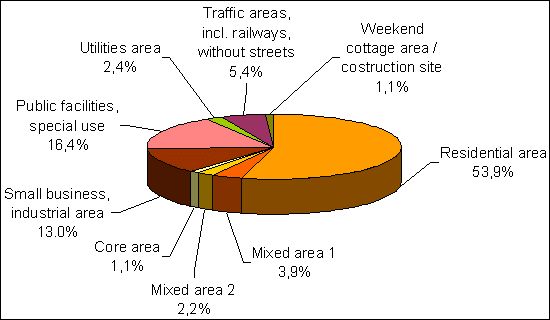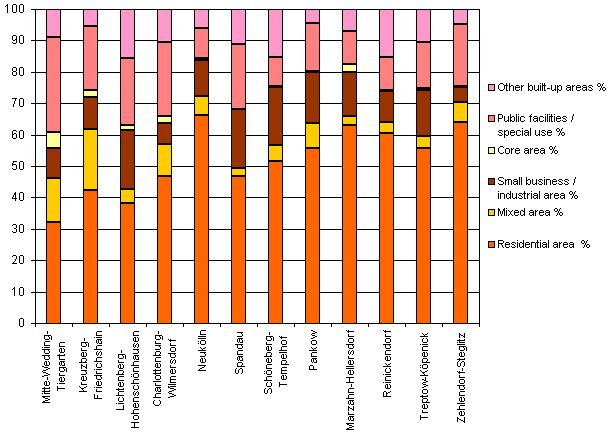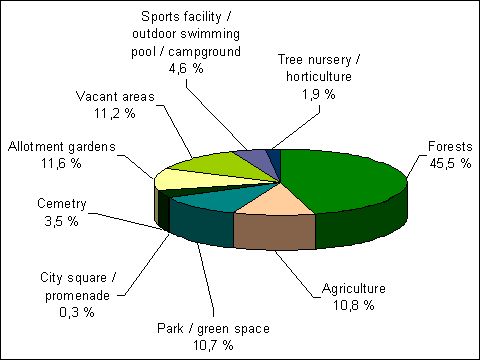After the integration of the former 24 Berlin boroughs into 12, the shares of uses have changed, compared to 1990, but there is still visable a historic grown structure of the city. Examples for the characteristic use distribution in the outskirts area are the boroughs of Marzahn-Hellersdorf and Reinickendorf, with 63 % and 60 % residential use and 14 % and 10 % industrial use, respectively, while in the borough of Mitte, with only 32 % Residential Areas, but 5 % Core Area use, 14 % Mixed Area use and a high share of Public Facilities (30 %), the central functions which have existed for centuries are reflected. This function is not shown so clearly for the West Berlin center around Kurfuerstendamm / Tauentzienstrasse, which has a Core Area share of only 2 % or less, since the core area is distributed among the three boroughs of Charlottenburg-Wilmersdorf, Mitte and Schoeneberg-Tempelhof. The inner city boroughs of Friedrichshain-Kreuzberg and Charlottenburg-Wilmersdorf have, with
42 % and 47 %, a relatively low share of living space. In turn, the share of public facilities is very high, with 21 % and 24 %, respectively. Friedrichshain-Kreuzberg and Mitte are the boroughs with the largest Mixed Area shares (19 % and 14 %). The originally available use mixture can still be recognized most clearly in the boroughs of Mitte and Friedrichshain-Kreuzberg.
Zehlendorf-Steglitz (64 % residential use) stand out as neighborhoods with slight industrial use (5 %).
Map 06.02 ”Inventory of Green and Open Spaces”
shows the different use categories in their shares of the non-built-up areas of Berlin, as well as their distribution throughout the city.
The largest part of the inventory of green and open spaces lies in the outskirts area. The large wooded areas of the Grunewald and the Dueppel forests in the southwest, the Spandau and Tegel forests in the northwest and the large forest areas in the borough Koepenick in the southeast of Berlin stand out particularly. Forests account for 45 % of all Green and Open Spaces (without waters) (cf. Fig. 4).




